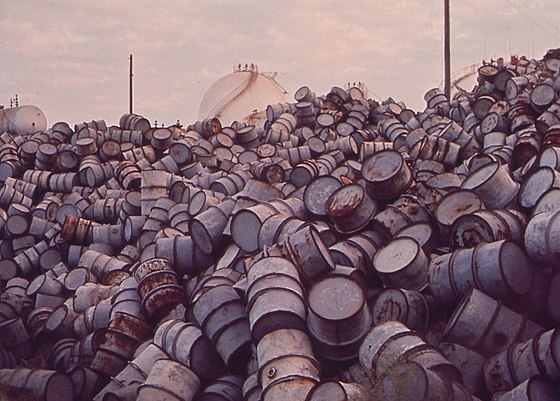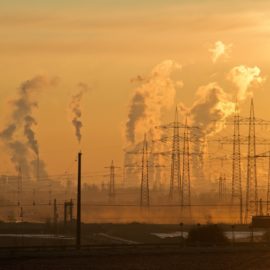
Do you believe the state DEQ or the Tulane Environmental Law Clinic? One says Cancer Alley is not over run with cancer the other says it is. This is the Tulane Environmental Law Clinic side of the story.
A peer-reviewed study from Tulane’s Environmental Law Clinic has confirmed what many Louisiana communities have known for decades: Industrial pollution is a health burden. The study found that numbers of cancer cases are abnormally high among Louisiana’s heavily polluted, predominantly Black neighborhoods. There is no longer room for debate. “Cancer Alley” is a reality. For decades, clients of our law clinic, including residents of Cancer Alley, have insisted that their neighborhoods are burdened with cancer and other health problems from industrial pollution. The pollutants released by petrochemical plants and other heavy industry have well-established health effects, including cancer, asthma, immune disorders, reproductive problems and heart disease.Yet in his keynote address at the recent Tulane Environmental Law Summit, Gov. John Bel Edwards dodged the reality of Cancer Alley. He claimed that a recent report about the Louisiana Tumor Registry (our state cancer database) “did not substantiate a Cancer Alley.” But this report had nothing to do with industrialization or pollution exposure — it was only a data audit to ensure that the registry reporting process was reliable. Elected leaders are right to look for data and evidence. But we must remember that a lack of research always results in a lack of evidence.
theadvocate.com
To do a study such as this, you need both pollution numbers and cancer numbers so you can compare and contrast them.
To understand the relationship between pollution and cancer, you need to compare pollution numbers and cancer numbers. The few previous environmental health studies of our region were not conclusive because they had major limitations. Some did not include pollution numbers, while others did not include enough people exposed to pollution to reliably detect any health impacts. In 2018, the Louisiana Tumor Registry began publishing annual cancer numbers for census tracts. Having data on these neighborhood-sized areas finally made it possible to compare local pollution numbers to local cancer numbers. Our team used the tumor registry’s new cancer dataset along with pollution numbers from the Environmental Protection Agency to make that comparison for census tracts throughout Louisiana. The EPA estimates pollution exposure for each census tract, using sophisticated math that accounts for time spent indoors and outdoors. In addition to these pollution numbers, our study included other relevant factors, like poverty, race, occupation, smoking and obesity. And we accounted for the realistic possibility that pollution might affect affluent versus low-income communities differently. We found strong evidence that toxic air pollution contributes to Louisiana’s extreme cancer burden — the second-highest rate of new cancers in the nation. Among low-income or predominantly Black neighborhoods in Louisiana, those with higher levels of toxic air pollution generally had abnormally high cancer numbers. The data suggest that toxic air pollution has caused at least 850 cancer cases over the last 10 years.
Another aspect of the problem is that there is about 20 years difference from the onset of the pollution and the outbreak of cancer among those living in the area.
Recent expansion of heavy industry means that Louisiana’s cancer problem may get even worse, because there is a time delay (typically years or decades) between pollution exposure and any associated cancer diagnosis. The state is permitting new facilities that will emit massive amounts of carcinogenic pollution, including the proposed Formosa Plastics megaplant in St. James Parish. Formosa Plastics would emit benzene, formaldehyde, ethylene oxide, and other known carcinogens in a census tract where the number of new cancer cases (for the population size) is already higher than 96% of census tracts in Louisiana, based on Louisiana Tumor Registry data released last month. After decades of fighting environmental injustice, our clients in Cancer Alley see reason for hope. The U.S. Army Corps of Engineers ordered an environmental review that indefinitely blocked the proposed Formosa plant. And EPA Administrator Michael Regan recently announced a $600,000 investment in pollution monitoring for the region, including communities like Mossville that are outside Cancer Alley but are similarly overburdened with industrial pollution.
This is the study that is needed to see the impact of the pollution and to see a way out.
Our study provides the scientific evidence that state and local leaders have been seeking. Our clients and the communities they represent should not have to choose between clean air and jobs. They want a future where tourism, film, seafood, and other clean industries allow their historic communities to thrive again. The data tells us what Louisianans have known for years: Toxic air pollution contributes to Louisiana’s abnormally high cancer rate. Our clients want lawmakers to get behind a cleaner, healthier vision for Louisiana. Because no one wants their home to be a Cancer Alley.
Will the state read and inwardly digest the study or will they still continue to fight science?



